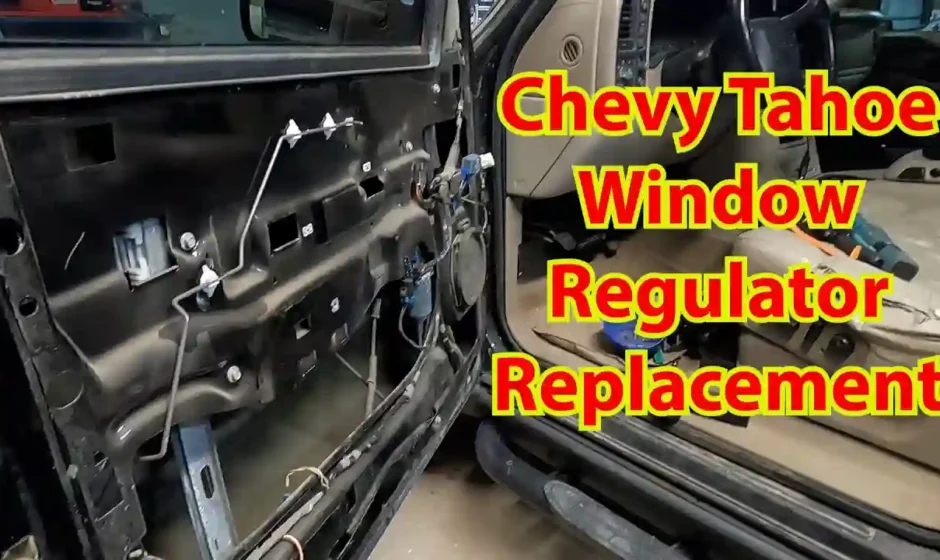When it comes to car repairs, tackling the job yourself can be both rewarding and cost-effective. One such repair that many car enthusiasts and DIYers can handle is the replacement of a window regulator. Window regulators are responsible for controlling the movement of your car’s windows, allowing you to raise and lower them. Over time, these regulators may wear out or malfunction, requiring replacement. In this article, we’ll provide you with valuable DIY tips and tricks for successfully replacing your car’s window regulator.
Assess the Situation:
Before diving into the DIY project, it’s essential to assess the situation and understand whether you’re dealing with a malfunctioning window regulator. Here are some common signs that indicate it’s time for a replacement:
- Unresponsive Windows: If one or more of your car’s windows are unresponsive when you try to raise or lower them, it’s a clear sign that the regulator may be malfunctioning.
- Slow or Jerky Operation: Sluggish or jerky window movement can be a result of a worn-out regulator. If your windows are struggling to move smoothly, replacement may be necessary.
- Strange Noises: Unusual noises, such as grinding or clicking, when operating the windows can indicate issues with the regulator’s gears or cables.
- Window Slipping or Falling: If your window slips or suddenly drops when you try to raise it, the regulator is likely failing and needs replacement.
Gather the Necessary Tools:
Once you’ve confirmed that a window regulator replacement is needed, it’s time to gather the necessary tools and materials. Here’s a basic list of what you’ll need:
- Replacement Window Regulator: Ensure you have the correct replacement part for your specific make and model of vehicle. You can typically find compatible regulators online or at auto parts stores.
- Screwdrivers: You’ll need both Phillips and flat-head screwdrivers for various parts of the job.
- Socket Set and Wrenches: Depending on your car’s design, you may need these tools to remove bolts and fasteners.
- Trim Removal Tools: These specialized tools can help you remove interior door panels without damaging them.
- Pliers: Needle-nose pliers can be handy for gripping and manipulating small components.
- Rivet Gun and Rivets: If your replacement regulator requires rivets for installation, you’ll need a rivet gun and the appropriate rivets.
- Safety Gear: Always wear safety glasses and gloves to protect yourself during the repair.
Follow a Step-by-Step Guide:
Now that you have the necessary tools and materials, it’s time to follow a step-by-step guide for the window regulator replacement. Here’s a general outline of the process:
- Disconnect the Battery: For safety reasons, it’s essential to disconnect the vehicle’s battery before starting any electrical work on your car.
- Remove the Door Panel: Use your trim removal tools and screwdrivers to carefully remove the interior door panel. This step allows access to the window regulator and related components.
- Disconnect Electrical Connections: Locate and disconnect any electrical connections related to the window regulator, such as the window motor and switch.
- Detach the Window: Gently detach the window from the regulator. You may need to secure it in the up position temporarily to prevent it from falling.
- Remove the Old Regulator: Unbolt and remove the old window regulator from the door frame. Be sure to note the position and routing of any cables or wires.
- Install the New Regulator: Position the new regulator in place and secure it to the door frame. Ensure that any cables or wires are routed correctly.
- Reattach the Window: Carefully attach the window to the regulator, aligning it properly. You may need to secure it in place temporarily while you complete the installation.
- Reconnect Electrical Connections: Reconnect any electrical connections you disconnected earlier.
- Test the Window Operation: Before reassembling the door panel, test the window’s operation to ensure it moves smoothly and functions correctly.
- Reassemble the Door Panel: Carefully reattach the interior door panel, securing it in place with screws or fasteners.
- Reconnect the Battery: Once everything is in place and secure, reconnect the vehicle’s battery.
Tips and Tricks for Success:
To ensure a successful DIY window regulator replacement, consider the following tips and tricks:
- Work Methodically: Take your time and follow each step carefully. Rushing can lead to mistakes.
- Label and Organize: Label and organize the screws, bolts, and fasteners you remove to ensure they go back in the correct places during reassembly.
- Refer to Manuals: Consult your vehicle’s repair manual or online resources for detailed instructions specific to your car’s make and model.
- Safety First: Always prioritize safety by wearing appropriate protective gear and taking precautions when working around electrical components.
- Ask for Help: If you’re unsure about any aspect of the repair, don’t hesitate to ask for help or seek guidance from experienced DIYers or forums dedicated to automotive repairs.
- Take Photos: Take photos of the disassembly process to have visual references when reassembling components.
- Be Patient: Some parts may be stubborn or challenging to remove. Be patient and use gentle but firm pressure to avoid damaging components.
- Test Thoroughly: After completing the replacement, test the window operation multiple times to ensure it functions correctly.
Conclusion:
Replacing a window regulator is a manageable DIY project that can save you money on labor costs. By assessing the situation, gathering the necessary tools, following a step-by-step guide, and applying the tips and tricks mentioned in this article, you can successfully replace your car’s window regulator and enjoy the satisfaction of a job well done. Remember that patience and attention to detail are key to a successful DIY repair.



